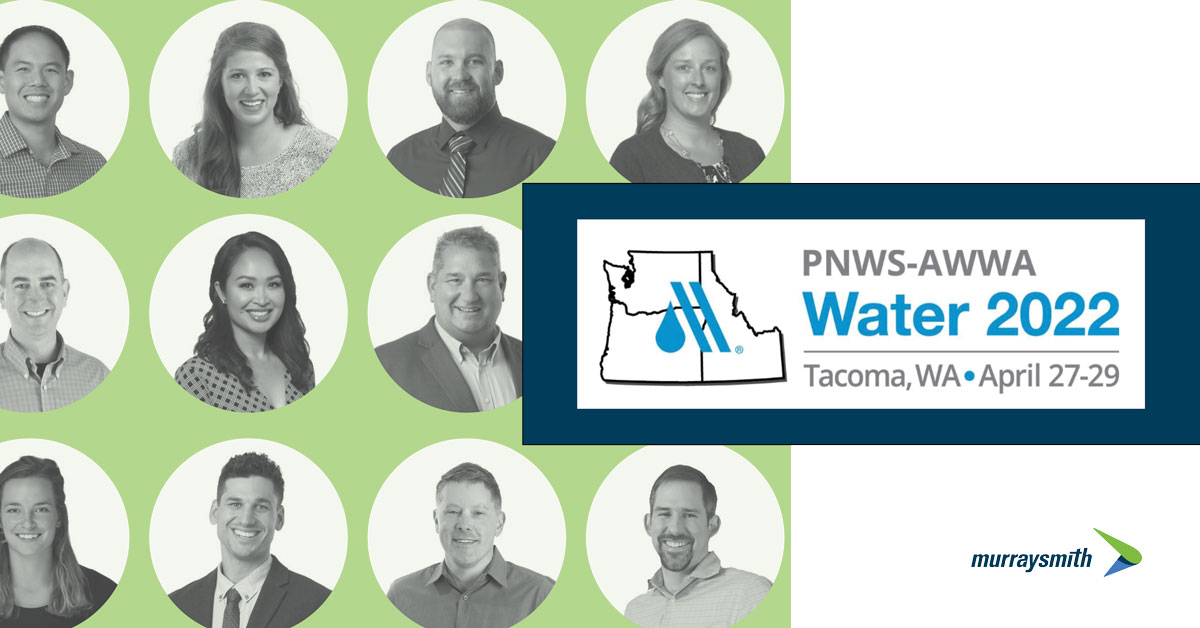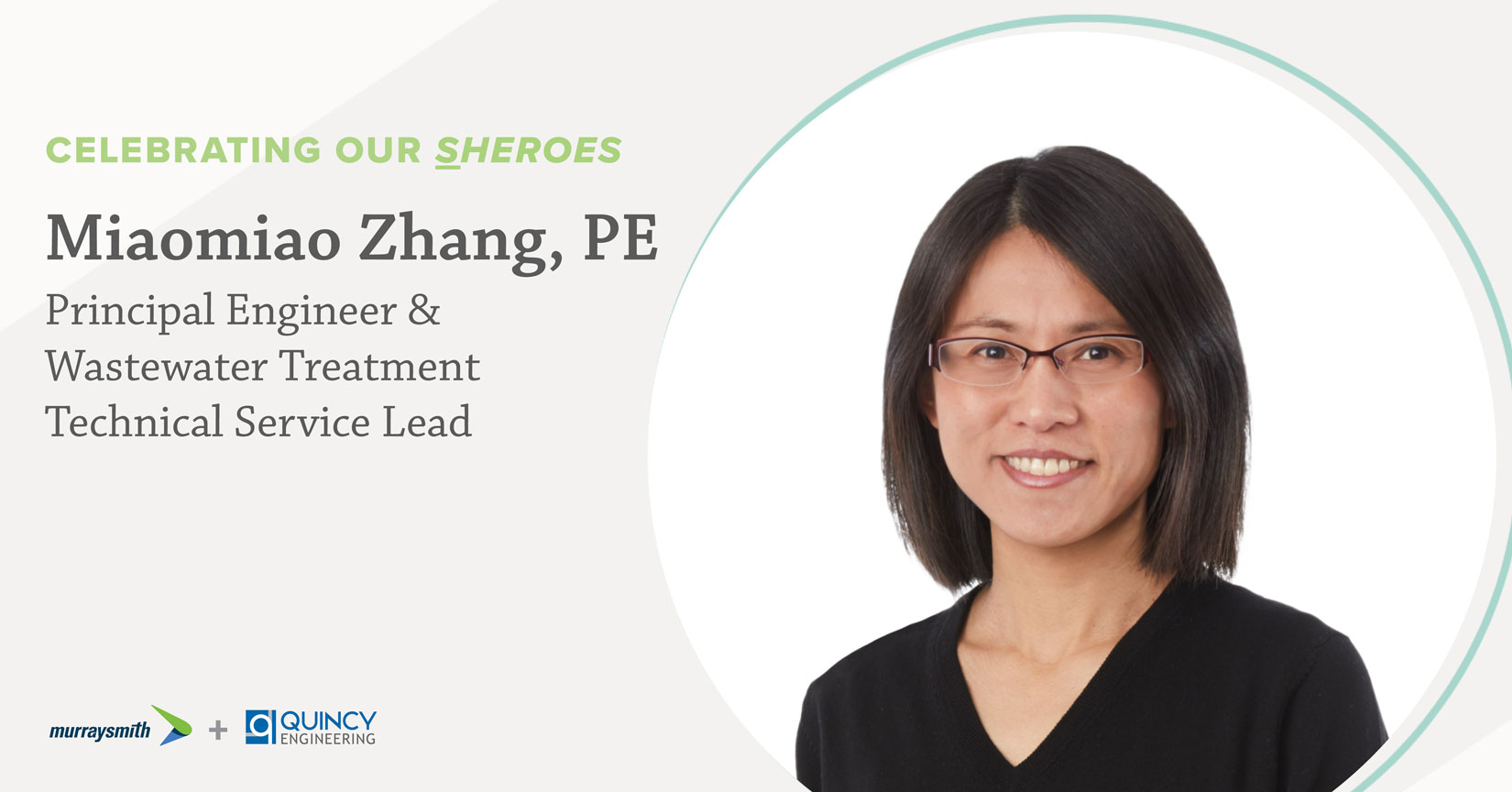At this year's Pacific Northwest Section-American Water Works Association Conference—the Northwest's largest conference and trade…
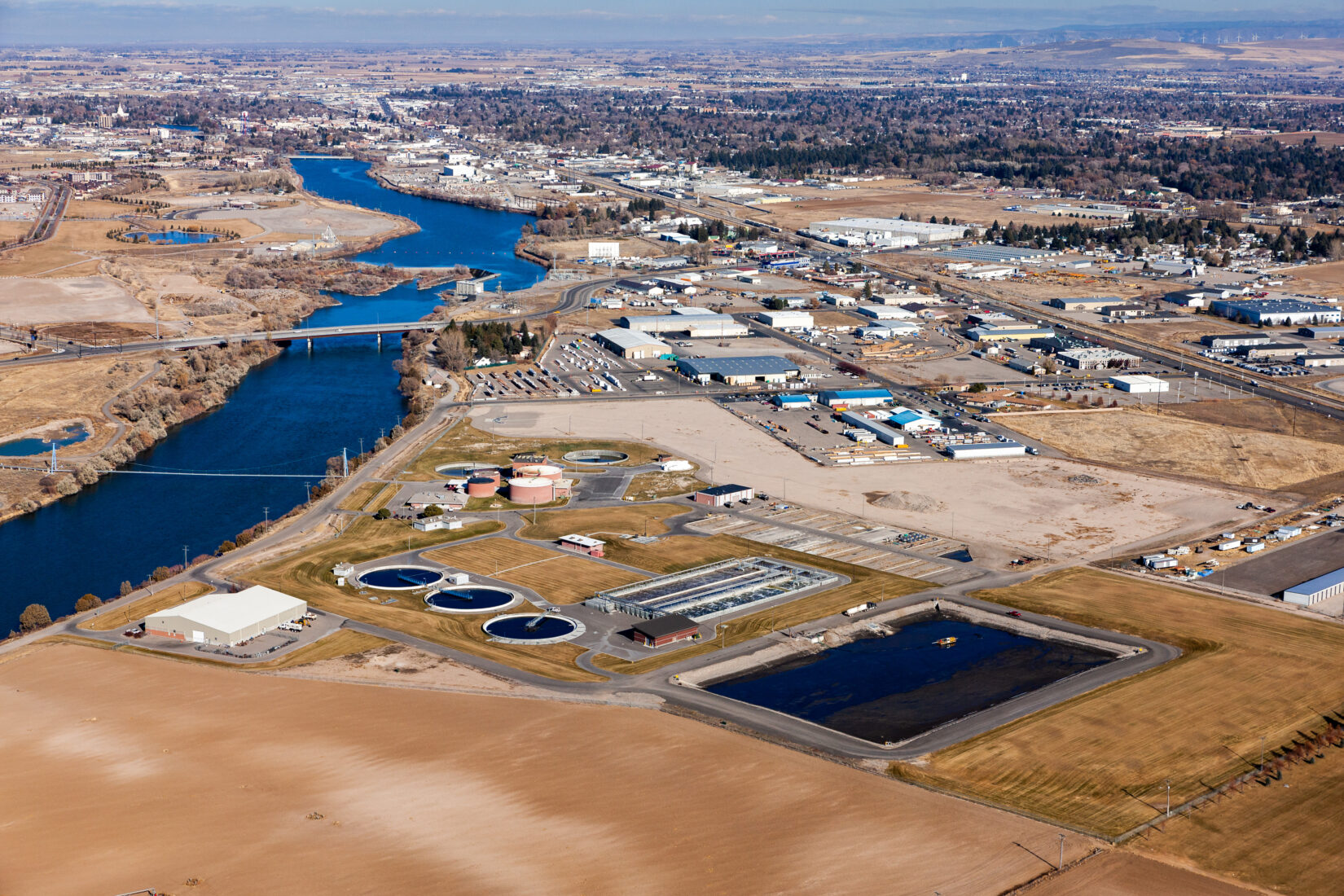
A Decade of Wastewater Treatment Work in Idaho Falls
Murraysmith has been working with the City of Idaho Falls for more than a decade, helping tackle some of their most important wastewater treatment projects. Beginning with the development of the City’s 20-year Wastewater Treatment Facility (WWTF) Plan in 2008, the Murraysmith team has completed upgrades to their secondary and primary treatment facilities and is currently starting design of new dewatering facilities. We have employed a consistent approach, successfully collaborating with the City to design projects both tailored to the City’s budgets and adaptable enough to meet changing treatment needs, predicted and unforeseen.
Here’s how we do it.
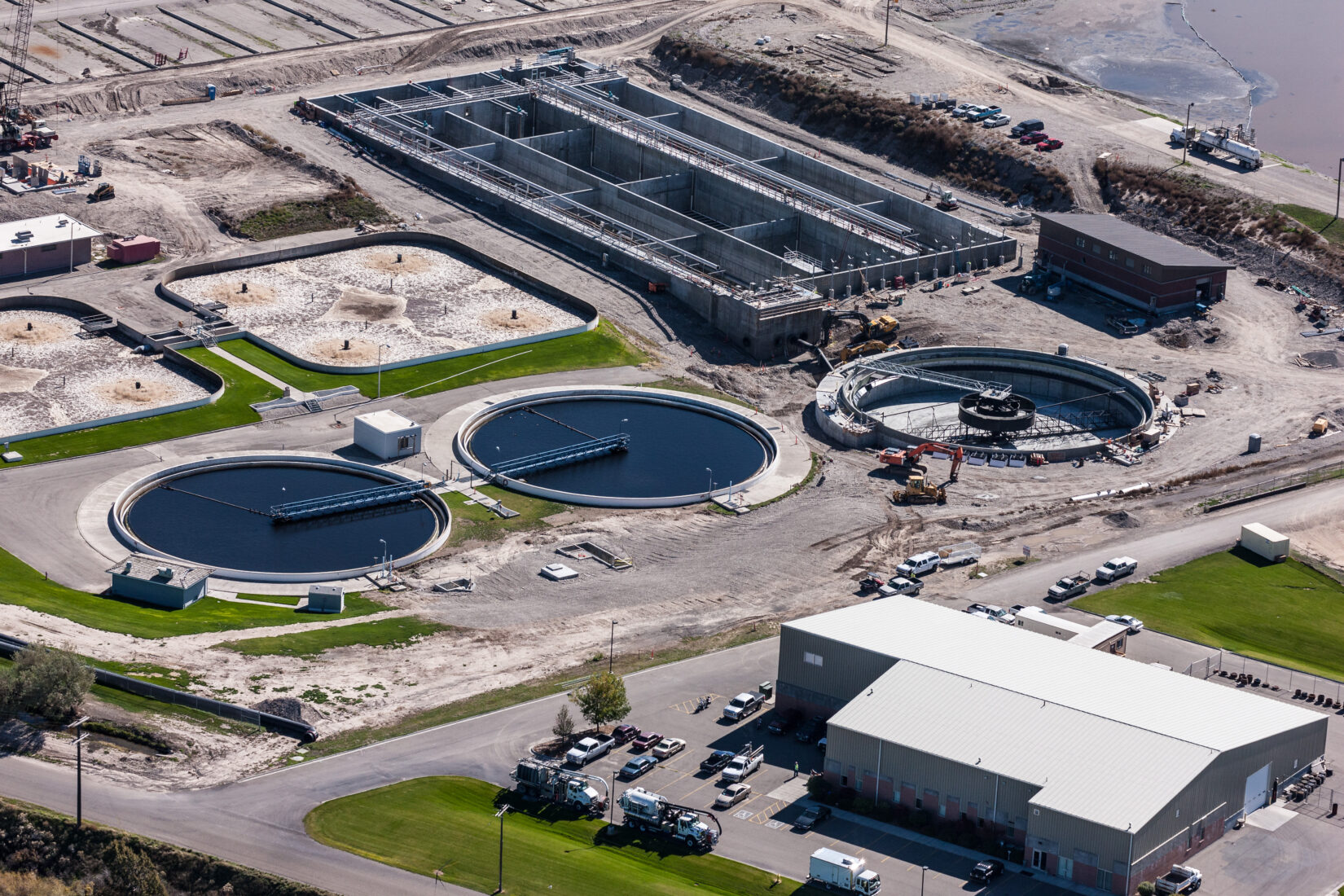
Construction of Secondary Treatment: Aeration Basins #1-3 and Secondary Clarifier #3.
We start by understanding the big picture.
The world of wastewater technology is everchanging. And combined with the high-level nature of planning documents and the interconnectedness of treatment plant processes (meaning it’s all part of a larger network), we’ve found that stepping back with our clients to take a look at big-picture objectives is a critical first step before hard design begins. This gives us a chance to evaluate applications for new and emerging technology, identify phasing opportunities, and streamline future projects.

Secondary Treatment project Secondary Clarifier #3 in operation.
This approach paid dividends on the City of Idaho Falls’ Secondary Treatment project when Murraysmith collaborated with Pharmer Engineering to complete the largest construction project at the Idaho Falls Wastewater Treatment Plant (WWTP) in over 40 years. By working cooperatively and establishing open communication between key staff and the City up front, our team not only captured the most important goal for the City—meeting year-round nutrient removal requirements of a new National Pollutant Discharge Elimination System permit—but also identified the City’s long-term vision, potential opportunities, and constraints. These included increasing energy-efficiency, being fiscally sustainable, and improving Snake River water quality beyond what is required. The improvements to the WWTP increase the capacity of the plant and remove ammonia and phosphorous to prevent fish toxicity and algal blooms in the Snake River.
With a solid grasp on the City’s priorities, Murraysmith helped the City acquire a low interest State Revolving Fund loan for the projects and manage the construction phase of the improvements. The team also implemented energy-efficient measures, which provided the City with significant power bill reductions and were approved for an energy-efficiency incentive payment of approximately $250,000.
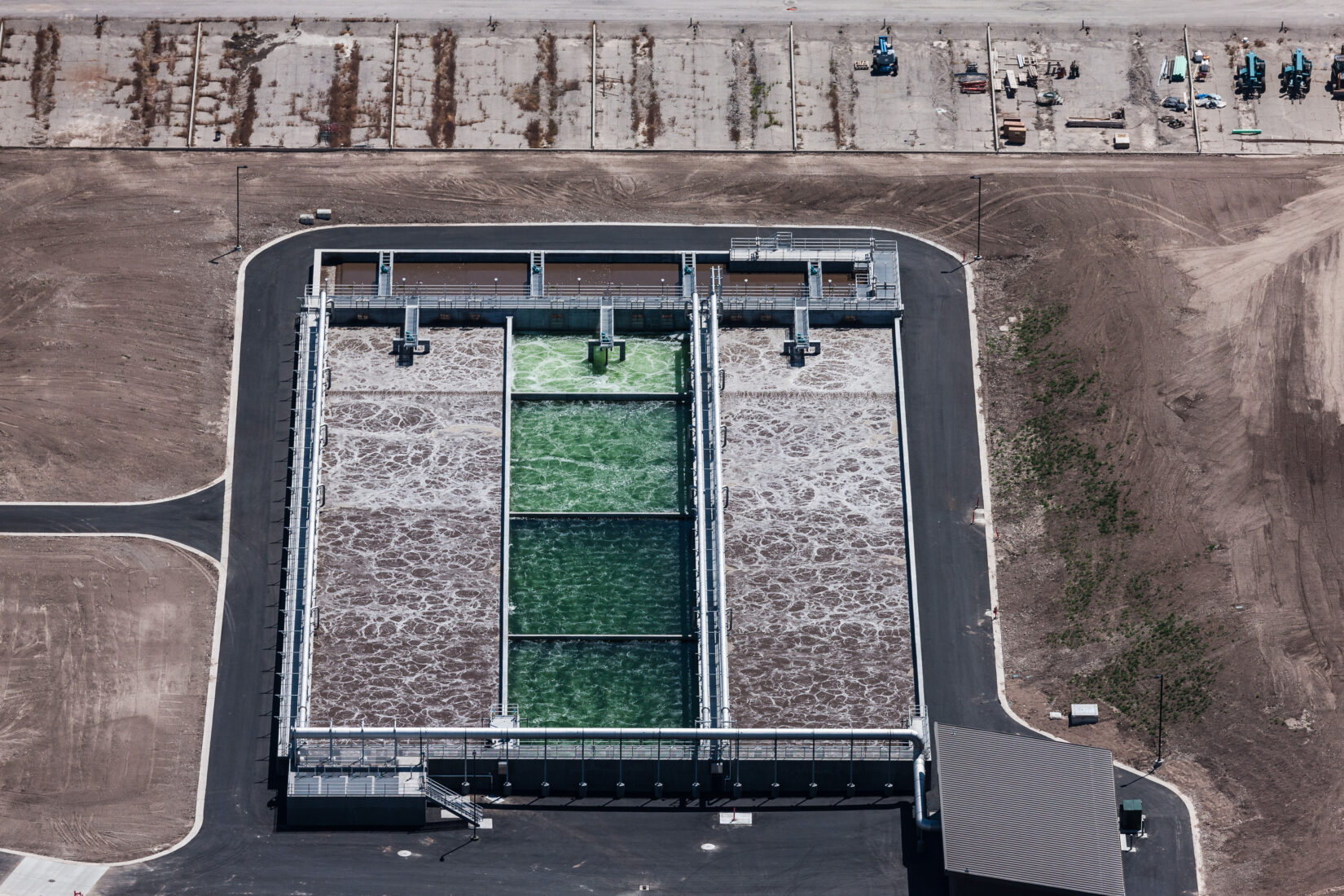
Secondary Treatment project Aeration Basins #1-3 in operation.
Then, we bring our A-team.
As we described in our previous article, Murraysmith’s treatment group tailors each of our teams to match our clients’ unique challenges. For the City’s recent Primary Treatment Upgrades project, we assembled a team who could build on our long-term relationship with the City delivering WWTP projects while strategically applying the right technical solutions and methods. Our team had to meet the diverse planning, design, and construction management needs for the rehabilitation of one existing primary clarifier, as well as the addition of a second primary clarifier, a new grit removal system, and a gravity thickener/fermenter for primary sludge fermentation. Most recently, the team moved into designing a new dewatering facility that includes dewatering screw presses, side stream treatment, and covered multi-bay cake storage.
Our key players:
Craig Anderson has acted as the overall project manager and main point of contact for the City of Idaho Falls’ Wastewater Treatment Plant improvements since 2008. He is a wastewater industry expert known for rolling up his sleeves and working with operations staff to design facilities that make operations easier. Under Craig’s leadership, our team successfully completed the Facility Plan that identified the design and construction of $35 million of upgrades with change order amounts well below industry average.
Clay Ellestad assisted Craig on both the Primary Treatment Upgrades and is currently helping manage the coordination and production efforts of the team during detailed design on the dewatering improvements. With experience working across all phases of wastewater projects, Clay has produced designs, reports, and specifications for wastewater treatment systems, gravity and pressurized pipeline networks, pump stations, and conveyance systems. He also regularly provides construction planning and oversight.

Aerial shot of Idaho Falls Wastewater Treatment Plant Primary and Secondary Upgrades Complete.
Finally, we make sure it works for the people who count.
We work hard to make sure our design process is an open and interactive one that encourages all levels of client input. Through our experience, we have learned that the people who operate and maintain a wastewater treatment facility have the best understanding of whether or not a design will work when it comes to life. That’s why we have consistently worked closely with City of Idaho Falls staff throughout the process, so we can deliver technically sound design concepts that they understand, need, and endorse, resulting in effective and lasting wastewater infrastructure for the community.
Murraysmith utilized an innovative approach to the design by producing a project definition report that guided the remainder of the project design towards the very successful solution of the new aeration basins, blower building, and anaerobic selector basin. We are very pleased with the aeration control technology that this improvement has allowed us to implement. We also noted the measure of success with the construction project being completed on schedule and budget.”
– Chris Fredericksen, City of Idaho Falls


